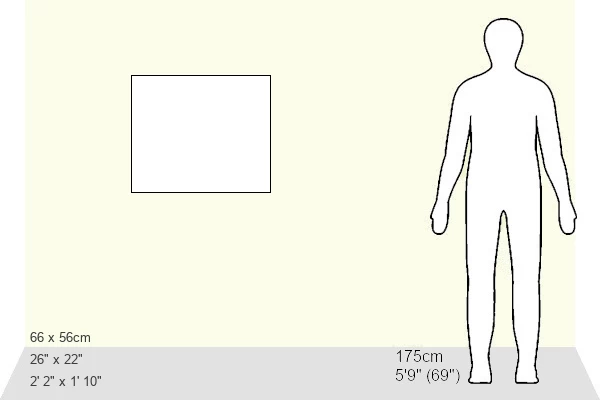Fine Art Print : Hallwachss electroscope
![]()

Fine Art Prints from Science Photo Library
Hallwachss electroscope
Hallwachss electroscope. This device was used in an 1888 experiment by the German physicist Wilhelm Hallwachs (1859-1922), the results of which were explained by J. J. Thomson. Light passing through the square hole in the black plate illuminates a round copper plate. Below this is an electroscope (cylinder) that is negatively charged (as seen by the thread attracted to one side). If the light is of sufficient energy, the electroscope will lose its charge (the thread falls). Thomson explained this as light causing electrons to be emitted from the copper plate, to be replaced by charge from the electroscope. Einstein, in 1905, used quantum theory to explain this photoelectric effect, and this won him the 1921 Nobel Prize for Physics
Science Photo Library features Science and Medical images including photos and illustrations
Media ID 6410646
© VOLKER STEGER/SCIENCE PHOTO LIBRARY
Device Einstein Electric Charge Ether Experiment Experimenting Instrument Photoelectric Effect Quantum Physics Relativity Speed Of Light Electroscope Laboratory Physical Special Relativity
20"x16" (+3" Border) Fine Art Print
Discover the captivating allure of science's past with our exquisite selection of Fine Art Prints from Media Storehouse. This mesmerizing image showcases the Hallwachs electroscope, a historic device used in an experiment by German physicist Wilhelm Hallwachs in 1888. The experiment, later explained by J.J. Thomson, played a pivotal role in the discovery of the electron. Bring a piece of scientific history into your home or office with our museum-quality prints, meticulously printed on archival paper to ensure longevity and vibrant colors. Each print is a work of art in its own right, adding an air of sophistication and intrigue to any space. Order yours today and embark on a journey through the annals of scientific discovery.
20x16 image printed on 26x22 Fine Art Rag Paper with 3" (76mm) white border. Our Fine Art Prints are printed on 300gsm 100% acid free, PH neutral paper with archival properties. This printing method is used by museums and art collections to exhibit photographs and art reproductions.
Our fine art prints are high-quality prints made using a paper called Photo Rag. This 100% cotton rag fibre paper is known for its exceptional image sharpness, rich colors, and high level of detail, making it a popular choice for professional photographers and artists. Photo rag paper is our clear recommendation for a fine art paper print. If you can afford to spend more on a higher quality paper, then Photo Rag is our clear recommendation for a fine art paper print.
Estimated Image Size (if not cropped) is 50.8cm x 36.8cm (20" x 14.5")
Estimated Product Size is 66cm x 55.9cm (26" x 22")
These are individually made so all sizes are approximate
Artwork printed orientated as per the preview above, with landscape (horizontal) orientation to match the source image.
EDITORS COMMENTS
This print showcases Hallwachss electroscope, an instrumental device utilized in a groundbreaking experiment conducted by German physicist Wilhelm Hallwachs in 1888. The results of this experiment were later elucidated by the renowned J. J. Thomson. In the image, we observe light passing through a square aperture on a black plate, brilliantly illuminating a circular copper plate beneath it. Positioned below is an electrified cylinder-shaped electroscope, clearly indicated by the thread being attracted to one side. The crux of this experiment lies in understanding how light energy affects the electroscope's charge. If the light possesses sufficient energy, the electroscope will gradually lose its charge until finally discharging completely (indicated by the falling thread). J. J. Thomson attributed this phenomenon to electrons being emitted from the copper plate due to exposure to light and subsequently replaced with charge from the electroscope. Remarkably, it was Albert Einstein who further explained this intriguing photoelectric effect using quantum theory in 1905—an achievement that ultimately earned him the prestigious Nobel Prize for Physics in 1921. This photograph serves as a testament to both Hallwachs' pioneering research and Einstein's revolutionary contributions to physics. Displayed against a laboratory backdrop filled with scientific equipment and apparatuses, this image encapsulates key concepts such as electric charge, relativity theories like special relativity, quantum physics principles, and even references to ether—a concept once believed to be responsible for propagating light waves through space but later debunked by Einstein's work.
MADE IN AUSTRALIA
Safe Shipping with 30 Day Money Back Guarantee
FREE PERSONALISATION*
We are proud to offer a range of customisation features including Personalised Captions, Color Filters and Picture Zoom Tools
SECURE PAYMENTS
We happily accept a wide range of payment options so you can pay for the things you need in the way that is most convenient for you
* Options may vary by product and licensing agreement. Zoomed Pictures can be adjusted in the Cart.



